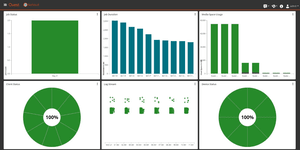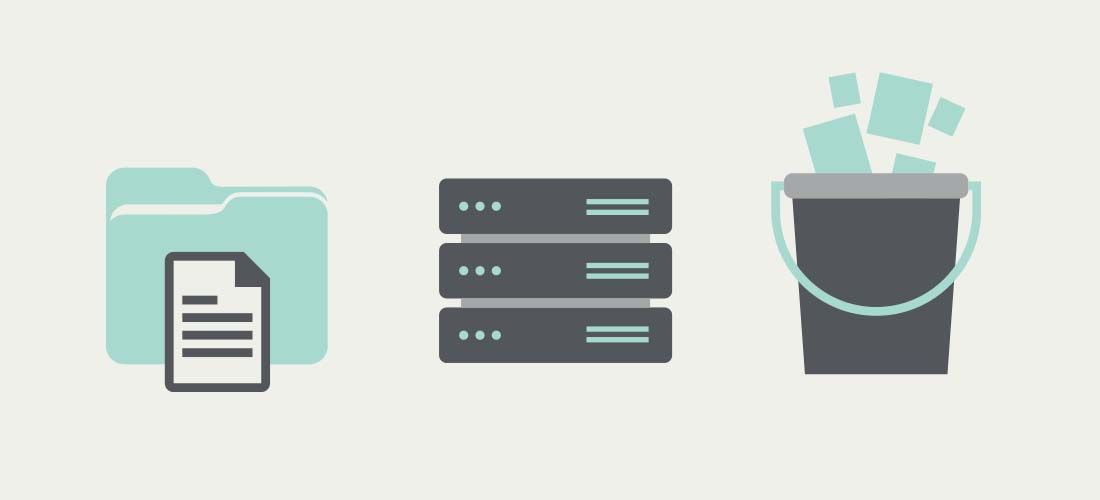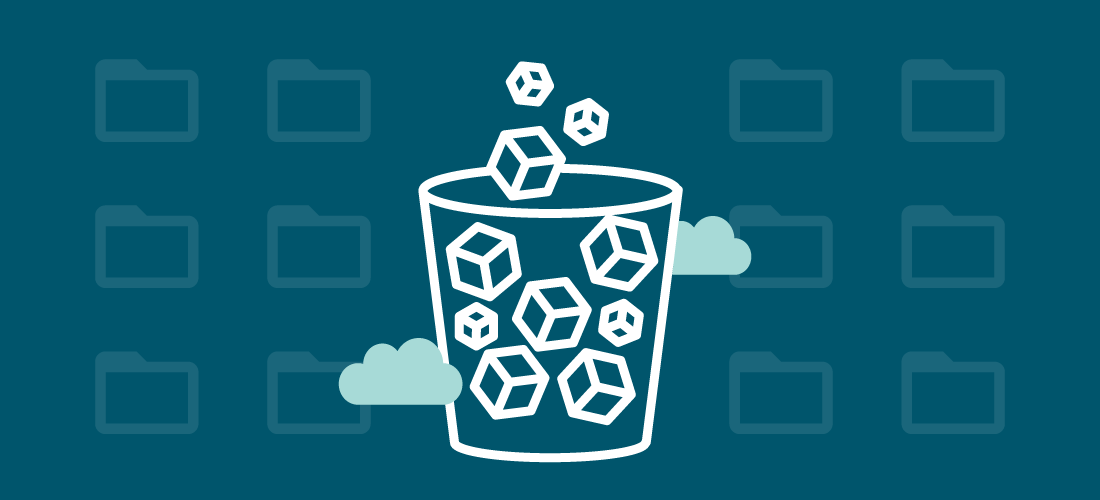
As a managed service provider, are you ready to take advantage of the growing demand for data protection services? The market for data protection as a service (DPaaS) is expected to grow at a 31.3 percent compound annual growth rate (CAGR) to $104 billion by 2027. The growth is being driven by the rapid migration of on-premises workloads and storage to the cloud and from the widespread adoption of as-a-service offerings that shift CapEx to OpEx.
Concurrently, data privacy laws and the ever-present threat of ransomware attacks have increased the appeal of using data protection service providers. Additionally, this growing opportunity drives the business for the managed service provider (MSP), making the MSP market more competitive and heightening the demands and expectations of the clients.
5 types of data protection services for the managed service provider
Overall, the data protection business for MSPs alone is projected at ~ $10B globally, as Mordor Intelligence reports. But if you’re a managed service provider who cannot offer a wide range of data protection services, you’ll miss out on an opportunity to expand your business. In this post, I’ll describe five types of data protection services you can offer, whether you’re a new MSP trying to shorten your time to market for data protection services or an existing data protection MSP looking to grow your business.
1. Backup and recovery services
At a bare minimum, every IT team must back up the organization’s data thoroughly and be able to restore it accurately. As that becomes complex and costly in an era of hybrid environments and fast-growing volumes of data, smart IT managers outsource backup so they can focus on adding value elsewhere.
That opens up opportunities for the managed service provider with the storage capacity and software to help clients back up and recover data quickly. Backup as a service (BaaS) is an integral part of DPaaS, and one of the top-selling offerings among MSPs. Whether backing up to their own data center, the client’s data center or the cloud, MSPs typically differentiate offerings by data volume or by complexity of IT infrastructure.
- Enterprise clients — Data protection is complex in organizations with a broad range of operating systems, applications, databases, virtualization platforms and cloud service providers. To simplify the operating environment, MSPs should adopt and use a single comprehensive solution that covers all of these environments, instead of running multiple point solutions.
- SMB clients — In simpler IT environments, like those using only the Windows Server suite, MSPs can use a snapshot- or image-based solution to simplify backup and recovery. To manage the exponential growth of data in organizations of any size, the managed service provider should also have an eye on technology that provides data deduplication. It reduces storage requirements and cost significantly, enabling an MSP to either be more cost competitive or reap higher profit margins.
2. Disaster recovery services
According to a 2020 study, 51 percent of B2B and B2C companies surveyed had suffered at least one micro-disaster in the previous 12 months. Besides man-made and natural disasters like storms and power outages, all companies must prepare for and minimize business disruptions due to the increased frequency and reach of other disasters. Those include cyberattacks from malware, viruses and ransomware. With estimates of total cybercrime damage exceeding US$10 trillion by 2025, every business has a stake in disaster recovery and every managed service provider can play a role by offering disaster recovery services.
Disasters result in downtime, and the cost of that downtime, while hard to calculate, is always too high. Few companies emerge from a disaster relieved at how easy they got off. Like insurance, disaster recovery doesn’t generate revenue or reduce costs. But almost all companies believe in insurance as a measure for managing risk, so why don’t all companies embrace disaster recovery as a business practice? Consider that an eight-hour outage in a $100-million-per-year company can cost nearly one-half million dollars in repair, employee downtime and lost revenue, not including customer frustration and loss of confidence. Any company performing its own calculations can soon see the value that disaster recovery can keep the business from losing.
Smart MSPs counsel their clients to store a second copy of their backups offsite as the first step in a disaster recovery scheme. That ensures a copy from which to recover data if the main backup is damaged, corrupted or unavailable due to a physical disaster.
To capitalize further on this market need, MSPs can develop disaster recovery as a service (DRaaS) and offer it to customers of all sizes. Estimates have pegged the DRaaS market at US$8.4 billion in 2021, as more companies turn one eye to digital transformation while keeping the other on vulnerabilities, threats and cybercrime.
The 3-2-1 rule is a cornerstone of disaster recovery. It calls for maintaining at least three versions of data on two different media, and storing one of them off site in case the primary, on-premises backup is damaged. MSPs offering DRaaS quickly learn that replication technology is the key to observing the 3-2-1 rule because it allows efficient copying of data to other devices, sites or cloud providers. With replication, they can protect data more efficiently and thoroughly, whether backing up to their customers’ data center, to their own data center or to a public cloud. For disaster recovery purposes, a managed service provider can lower their costs with object storage like AWS S3 and Azure Blob, or even “cold storage” like AWS Glacier and Azure Cold Storage, although recovery may take longer.
Even though there are indications that fewer companies are affected by ransomware, the cost of recovering from an attack is rising sharply. Replication plays a role in defending against ransomware by allowing MSPs to isolate multiple copies of backups and store them in multiple locations. Replicated data stands a better chance of survival in case of cyberattacks like ransomware.
3. Data archiving and retention services
Data archiving and retention entails more than simply storing files for a set period of time. These operations are part of a broader approach to records management that covers the lifecycle of organizational content and is guided by regulation. Employee files, financial statements, contracts, emails and other types of records are all subject to long-term data retention requirements in most organizations.
But in archiving, one size is unlikely to fit all. Different standards apply to different types of records, specifying how long they should be kept, how they should be stored and how they should be destroyed. Complying with industry standards can mean retaining data and backups for a specified number of years. Some files must also be found and quickly retrieved if they are needed for an audit or litigation. Those differences lead companies to use less expensive means like cloud storage and even tape, depending on the likelihood that the data will need to be accessed soon. According to Statista, 94 percent of small businesses and 81 percent of mid-sized and large businesses polled globally in 2020 said they had used the cloud for data storage or backup.
The managed service provider that puts in place the right architecture can take full advantage of cloud tiering and object storage for their customers’ data archive and retention needs. Whether for the data center or a public cloud, they can build and offer archiving services along with backup. The powerful combination of archiving and cloud tiering allows them to keep backup data on premises (their data center or their clients’ sites) for fast access and recovery. With age, the data then moves to the cloud for long-term retention.
For MSPs, the opportunity lies in lowering the cost of backup through offerings like object storage and cloud tiering. But some cloud tiers, like archive and deep archive, are slower than others, like hot and cold. That means it’s important to balance the amount of money customers want to pay for storage against the wait time to retrieve it. The goal is to get the best of both worlds out of cloud tiering: the low pricing of cloud storage with short data retrieval times.
Here, too, MSPs can make advantageous use of data deduplication, both in archiving to the data center and to cloud services like AWS, Azure and Google. Deduplication can slash storage requirements and hardware costs, and source-side deduplication can make transmittal of archived data faster and safer. MSPs can use deduplication, replication and cloud-connected storage to offer clients automated data retention strategies that balance retrieval and storage costs while ensuring appropriate levels of security.
4. Data center monitoring and management services
IT departments devote a lot of time to tracking and managing data center resources such as storage, servers, network infrastructure, applications and databases. A managed service provider can relieve some of that burden by offering monitoring (IT systems performance, availability and maintenance) and management as a service, in both the cloud and the data center. That complements the momentum of businesses converting CapEx to OpEx: they purchase subscriptions and outsource services to offload the management of their evolving mix of clouds, hypervisors, and applications.
The opportunities for MSPs to add value lie in assessing the entire technology stack to identify bottlenecks, predict capacity issues and check for best practices. The first step in preserving system health and performance is to identify any abnormal behavior in physical and virtual servers, applications and data storage. Usually, that boils down to keeping an eye out for overutilized resources like CPU, RAM, storage and network bandwidth, and, if need be, combining any underutilized resources.
As the market opportunity grows, MSPs depend more on remote monitoring and management to discover and redistribute their customers’ existing computing resources and improve infrastructure performance. They add value by balancing workloads across hosts and clusters, creating/decommissioning virtual machines and eliminating zombie VMs. Understanding the capacity of customers’ hybrid environments is at the heart of proper resource allocation and cost control.
5. Cloud migration planning services
If three companies out of four will have moved their databases to the cloud in the near future — or even just one company out of four — will you be ready? Or, if you consider estimates of US$140.6 billion for cloud application services (SaaS) by 2022, what have you put in place to help your customers migrate to the cloud?
In the quest to reduce their on-premises footprint, many IT organizations are in need of assistance, so they turn to cloud migration consultants. That’s why planning for and moving workloads and storage is an opportunity for any managed service provider with cloud migration expertise. Providing the best solution involves understanding all aspects of the customers’ needs, recommending the right combination of resources and, above all, estimating costs to reduce sticker shock.
The first step in a comprehensive cloud planning strategy is to benchmark existing system performance. Next, some applications and systems are better candidates for migration than others, and it makes no sense to migrate environments that are over- or under-provisioned. Thus, MSPs add value by optimizing the customer’s infrastructure, selecting cloud resource options that balance cost and performance. They then develop models that lay out anticipated cloud costs for the optimized environment, compare them across various offerings and select the best-fit cloud service provider(s). Finally, once the business aspects are well established, the heavy technical lift of workload migration can begin.
All along the path, smart MSPs mitigate their customers’ risk by relying on automated migration tools to keep resource requirements in check, model costs and identify potential faults in advance. Of the companies that have tried moving VMs out of their data center, some have discovered that their cloud infrastructure is either under- or overutilized. Despite the hard work of migration, they have repatriated their workloads to the data center when cloud costs proved higher — or performance proved lower — than anticipated. So, the managed service provider that adheres to best practices enables customers to migrate wisely and stay within their budget.

Protect all your systems, applications and data.
Take the next step toward building your Manage Service Provider business
Whether you are looking to first become a data protection managed service provider or you already provide these services, you can grow your business, be more competitive and increase profitability with a solid technology foundation and a close partnership with your technology solution providers.
At Quest®, we’ve invested in data protection technology for our MSP partners through products like these:
- Backup and recovery — Netvault® (enterprise), Rapid Recovery (SMB)
- Disaster recovery — NetVault, QoreStor®
- Long-term data retention — QoreStor
- Data center monitoring and management — Foglight® Evolve
- Cloud migration planning — Foglight Evolve
We’ve also invested in the data protection business of MSPs through comprehensive pricing, licensing, support and partner programs that enable them to deliver highly competitive and profitable services.
With Quest as a partner, a managed service provider can quickly bring a wide range of offerings to market and capture their share of the coming $14-billion market for data protection and recovery.



